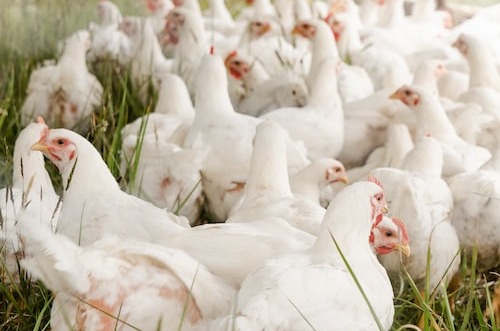W39: Chicken Update

In W39 in the chicken landscape, poultry meat exports from Russia’s Stavropol region reached 58.87 thousand metric tons (mt) so far in 2023, a 2.1% increase compared to the same period in 2022. Stavropol poultry shipments are primarily destined for Saudi Arabia, China, and Azerbaijan. The region's agricultural producers have adeptly mitigated market entry risks, supported by various export assistance measures such as transportation cost compensation, preferential lending, certification, and international partner search initiatives. Notably, Stavropol chicken meat recently entered the Turkmenistan market, with approximately ten domestic enterprises contributing to its production.
Gaucho chicken meat exports (fresh and processed) from Rio Grande do Sul, Brazil, reached 65.8 thousand mt, valued at USD 128.3 million in Aug-23, a 3.4% YoY increase in volume and a 1% YoY rise in value. The Poultry Organization of Rio Grande do Sul expects this steady export pace to continue throughout Q4-23, especially as the region faces climate-related challenges. While there was a slight 0.6% decrease in export volume to 502.5 thousand mt from Jan-23 to Aug-23 compared to the same period in 2022, export value increased by 2.6% YoY to USD 1.02 billion. The Poultry Organization of Rio Grande do Sul attributes this stability to external factors like the war in Eastern Europe and issues related to avian influenza in competitor countries. Consequently, Rio Grande do Sul will likely maintain its export volumes or align with the national growth trend.
The unique challenges faced by organic chicken farming in Germany, which require adherence to ethical and production standards, can be met through innovative approaches. Traditional practices involving specialized chicken genotypes often result in the immediate destruction of male chicks from laying lines due to unsatisfactory fattening indicators. Due to ethical reasons, this practice was recently banned in Germany and France and alternatives need to be introduced. One such approach is the in-egg sexing of embryos and saving only the female ones. Another alternative is the use of dual-purpose genotypes, where females are used for egg-laying and males for fattening.
Breeders at the Thünen Institute for Organic Farming introduced a dual-purpose cross by combining the landrace Deutsches Lachshuhn with the commercial egg-laying White Rock breed. This cross was compared to existing dual-purpose genotypes in Germany. The results showed that the Deutsches Lachshuhn × White Rock cross significantly improved egg production and overall productivity compared to purebred landrace chickens. These crosses achieved a balanced production profile, emphasizing their potential to maintain old-breed genetic resources while obtaining high-production characteristics.
Lastly, the head of the poultry division at the Giza Chamber of Commerce, Sameh Al-Sayed, noted a recent frozen poultry demand surge in Egypt. This demand increase is primarily due to frozen poultry’s cost-effectiveness, priced at around USD 0.49 less per kilogram (kg) than live poultry. Al-Sayed emphasized that frozen poultry offers a higher net protein weight than live poultry, with a kilogram of frozen poultry trading at USD 2.86/kg, which is pure protein without the additional weight of entrails and other waste typically found in live chickens. Al-Sayed also noted that the global trend is shifting towards frozen poultry, driven partly by environmental concerns associated with slaughtering live birds in densely populated residential areas. Currently, poultry prices at farms range between USD 2.20/kg and USD 2.23/kg. Depending on their residential location, consumers are expected to pay between USD 2.49/kg and USD 2.59/kg.






